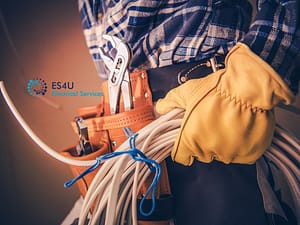Performance strapping is a technique used to apply adhesive tape to specific body parts to provide support, enhance stability, and prevent injuries. In football, performance strapping is widely used by players to support their joints and muscles, reducing the risk of strains, sprains, and other common injuries. This method is particularly effective for high-impact sports like football, where players are prone to sudden movements and physical contact.
Importance of Injury Prevention in Football Teamwear
Incorporating performance strapping into football teamwear is crucial for maintaining player health and performance. Football teamwear, designed for comfort and functionality, can be complemented by performance strapping to ensure that players are adequately protected. Strapping helps prevent injuries that can sideline players and affect team performance. By integrating performance strapping into their routine, teams can minimize downtime due to injuries and maintain a consistent level of play.
Common Football Injuries and How Strapping Helps
Typical Injuries in Football
Football players are susceptible to various injuries, including:
- Ankle Sprains: Caused by twisting or rolling the ankle, leading to ligament damage.
- Knee Injuries: Such as ACL tears or meniscus injuries, often resulting from sudden changes in direction or impact.
- Hamstring Strains: Occur due to overstretching or overloading the hamstring muscles.
- Shin Splints: Result from overuse and stress on the shinbone and surrounding muscles.
Role of Performance Strapping in Injury Prevention
Performance strapping plays a significant role in preventing these common football injuries by:
- Providing Support: Strapping supports joints and muscles, reducing the risk of strains and sprains.
- Enhancing Stability: It stabilizes vulnerable areas, particularly the ankles and knees, minimizing the chance of injury from sudden movements.
- Limiting Range of Motion: By restricting excessive movement, strapping helps prevent injuries caused by overextension or hyperflexion.
Performance Strapping Techniques for Different Body Parts
Ankle Strapping Techniques
Ankle strapping is essential for football players, given the high risk of ankle sprains. Effective techniques include:
- Figure-Eight Method: Provides comprehensive support by wrapping the tape in a figure-eight pattern around the ankle and foot.
- Heel Lock Method: Secures the heel in place, reducing the risk of rolling the ankle.
Knee and Thigh Strapping Techniques
Strapping the knee and thigh can prevent injuries and provide support for existing conditions:
- Knee Strapping: The patellar method helps stabilize the kneecap, while the cruciate method supports the knee ligaments.
- Thigh Strapping: Spiral wrapping helps support the hamstrings and quadriceps, preventing strains and aiding recovery.
Enhancing Stability and Support with Performance Strapping
How Strapping Provides Joint Stability
Performance strapping enhances joint stability by:
- Creating a Firm Support Structure: The tape forms a supportive framework around the joint, limiting unnecessary movement.
- Distributing Pressure Evenly: It helps distribute pressure across the joint, reducing the risk of injury from uneven stress.
Supporting Muscles and Ligaments
Strapping supports muscles and ligaments by:
- Reducing Strain: By limiting excessive movement, strapping reduces the strain on muscles and ligaments.
- Promoting Proper Alignment: It helps maintain proper alignment of the muscles and joints, improving overall function and reducing injury risk.
Integrating Performance Strapping with Football Teamwear
Compatibility with Teamwear
Integrating performance strapping with football teamwear is essential for maximizing its effectiveness. Modern football teamwear is designed to be snug yet flexible, providing the necessary support without restricting movement. Performance strapping should be applied underneath the teamwear, ensuring it adheres properly to the skin while allowing the fabric to move naturally over it. This integration ensures that players can benefit from the support and stability provided by the strapping without compromising their comfort or mobility. Using high-quality, breathable materials for both strapping and teamwear can further enhance this compatibility, preventing irritation and ensuring players remain focused on their performance.
Ensuring Comfort and Mobility
Comfort and mobility are critical for football players, and performance strapping should enhance these aspects rather than hinder them. Proper application techniques ensure that the strapping does not bunch up or cause discomfort. Strapping should be applied with just the right amount of tension—tight enough to provide support, but not so tight that it restricts blood flow or movement. Regular adjustments and checks during breaks can help maintain comfort throughout training sessions and matches. By prioritizing comfort and mobility, players can perform at their best while benefiting from the protective support of performance strapping.
Benefits of Performance Strapping During Training and Matches
Reducing Injury Risk in Training Sessions
Training sessions often involve repetitive movements and high-intensity drills that can increase the risk of injuries. Performance strapping plays a crucial role in reducing this risk by providing additional support to vulnerable areas such as ankles, knees, and thighs. During training, players are more likely to push their limits, and strapping can help mitigate the impact of these activities. By stabilizing joints and muscles, performance strapping helps prevent overuse injuries and ensures that players can train effectively without the fear of sustaining an injury that could keep them off the field.
Maintaining Performance During Matches
During matches, maintaining peak performance is essential, and performance strapping can significantly contribute to this goal. Strapping provides the necessary support to prevent injuries, allowing players to focus on their game without worrying about potential strains or sprains. It also helps in maintaining muscle alignment and reducing fatigue by supporting muscle groups during intense physical activity. This support can be crucial during crucial moments of the game, helping players maintain their agility, speed, and strength throughout the match. By reducing the risk of injury and enhancing stability, performance strapping ensures that players can give their best performance on the field.
Tips for Effective Application of Performance Strapping
Proper Application Techniques
Effective application of performance strapping is key to maximizing its benefits. Here are some essential techniques:
- Clean and Dry Skin: Ensure the skin is clean and dry before applying the strapping to improve adhesion.
- Proper Tension: Apply the strapping with enough tension to provide support but not so tight that it restricts circulation or causes discomfort.
- Smooth Application: Avoid wrinkles or folds in the strapping, as these can cause irritation or reduce effectiveness.
- Layering: For additional support, apply multiple layers of strapping, but ensure each layer is smooth and evenly applied.
Common Mistakes to Avoid
Avoid these common mistakes to ensure the effectiveness of performance strapping:
- Over-Tightening: This can restrict blood flow and cause discomfort. Ensure the strapping is snug but not too tight.
- Inadequate Coverage: Ensure the entire area needing support is properly covered. Missing spots can reduce the effectiveness of the strapping.
- Poor Adhesion: Make sure the strapping adheres well to the skin. If it starts to peel, reapply it properly to maintain support.
Maximizing Safety and Performance with Strapping
Long-term Benefits of Using Performance Strapping
Consistently using performance strapping can provide long-term benefits for football players. By preventing injuries, players can have longer, more successful careers with fewer interruptions due to recovery periods. The support provided by strapping helps maintain joint and muscle health, reducing the wear and tear that can lead to chronic issues over time. Additionally, performance strapping can improve players’ confidence, knowing they have extra protection, which can enhance their overall performance.
Encouraging Best Practices Among Football Teams
To maximize the benefits of performance strapping, it’s important to encourage best practices among football teams:
- Education: Ensure players and coaches are educated on the proper application techniques and benefits of performance strapping.
- Regular Use: Incorporate strapping into the regular routine for training and matches to consistently benefit from its protective qualities.
- Feedback: Regularly seek feedback from players about their comfort and the effectiveness of the strapping, and make adjustments as needed.









